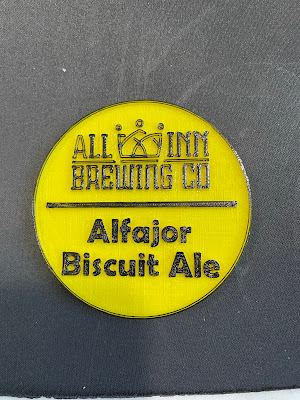Since it's release in 2021, KegLand's RAPT Pill was touted as having Wi-Fi and Bluetooth connectivity options, however users have been only able to access and use the Wi-Fi functionality up until now.
A recent firmware update for the Pill has enabled Bluetooth functionality which has prompted the RAPT developer, Trent Devers to clarify exactly how the Bluetooth feature works with the Pill.
The following text has been copied directly from Trent's post in the RAPT Users Group on Facebook. If you're a RAPT Pill (or other RAPT product user), it's a great idea to join so you can keep up to date on these features as well.
Q. What is the purpose of the Bluetooth feature?
A. The bluetooth feature allows Rapt Devices to talk to each other. This allows tight integration of Rapt devices and will allow us to expand the feature set of the Rapt ecosystem.
Q. Will Bluetooth on the Pill help me with my Wifi signal problems?
A. Yes - but you need to pair it to a Rapt Fermentation Chamber or Temperature Controller. The paired (bridging) device will pickup the bluetooth readings from the pill and include them when the bridging device submits its telemetry. Users with wifi signal problems typically have their pills inside a stainless fermenter that is inside a fridge and multiple brick walls between their wifi router. The Fermentation Chamber & Temperature Controller are usually not located within a steel "Faraday Cage" (https://en.wikipedia.org/wiki/Faraday_cage) and can usually get a decent signal from a shed or garage even when the wifi router is inside the house. These device can easily pickup the bluetooth signal and relay it on behalf of the pill and should resolve wifi signal problems.
Q. Can I use the Pills temperature probe to control the temperature of my Rapt Fermentation Chamber or Temperature Controller?
A. Yes. User manuals will be updated soon with instructions on how to do this.
Q. Can I use the Rapt Mobile App on my phone to talk to a bluetooth enabled Rapt device?
A. No
Q. Can I build a device/write my own code to read the Bluetooth signals from the Pill?
A. Yes, but we aren't offering any technical assistance on how to decode the bluetooth data.
Q. If I write my own code to read the bluetooth signal, can I submit it to the Rapt Cloud.
A. No. The public Api for Rapt Cloud only allows you to read data and not submit data.
Q. Will any Rapt Devices be able to talk to other non-Rapt devices like the InkBird Temperature Controller in the future?
A. No.
The timing of this update couldn't be better for us personally. We just completed our most recent brew, which was the first in our new stainless conical Cheeky Peak Nano-X Fermenter. We experienced the exact issue Trent outlined in the second question above with our Pill not able to reliably submit telemetry because of issues connecting to our Wi-Fi network due to being in a stainless fermenter enclosed in a refrigerator.
We were looking at Wi-Fi range extenders to help boost the signal in our garage where the fermentation fridge is located to address this, but may instead look at getting a RAPT Temperature Controller instead to replace our InkBird ITC-308 temp controller.
No doubt the Bluetooth functionality isn't going to meet the expectations of what some users were hoping for as not everyone wants to (or is able to) submit their telemetry to the cloud and would rather just be able to have the Pill report to a device locally via Bluetooth.
Check out our guide on How to connect RAPT Pill to RAPT Temperature Controller for detailed instructions on how to link the RAPT Pill and RAPT Temperature Controller together.




.png)

































.png)










